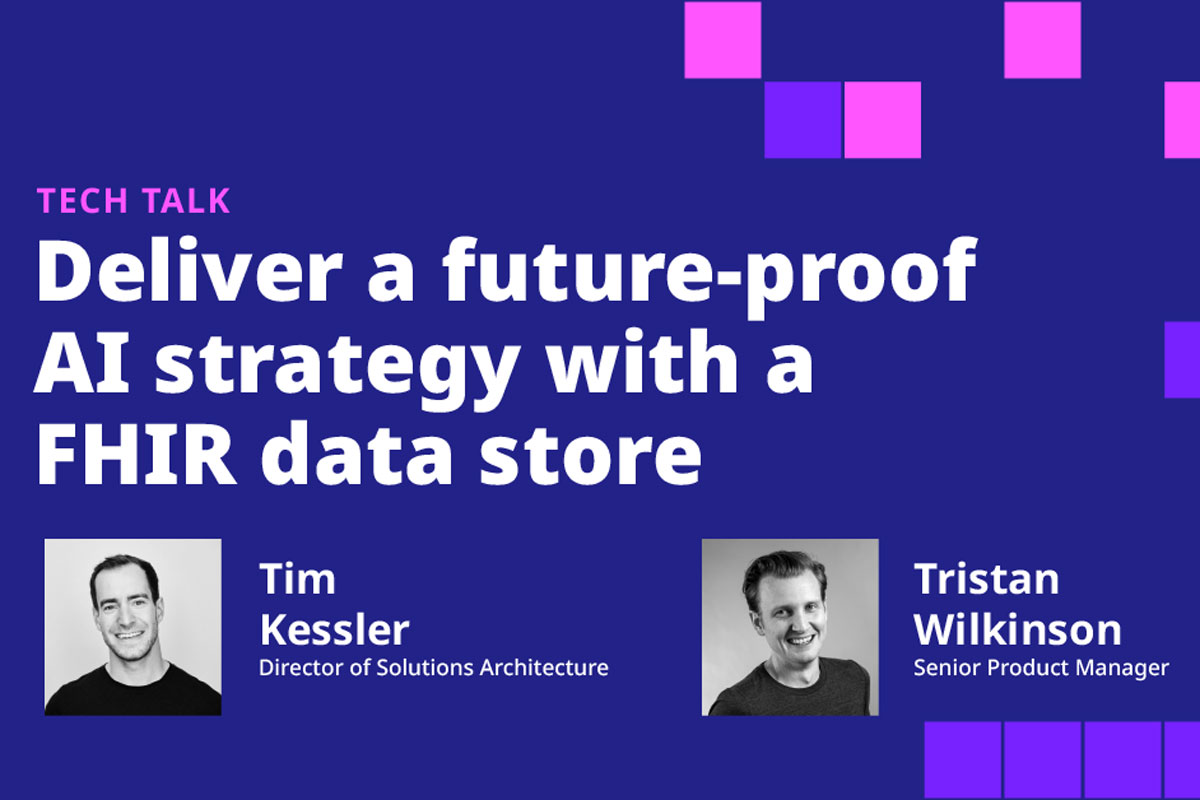[Recap] Deliver a future-proof AI strategy with a FHIR data store
Dec 15, 2023

Recent surveys revealed that 95% of health system executives believe cloud capabilities like AI and machine learning are critical to their goals — but only 6% have an established AI strategy. Taking a data-centric, HL7® FHIR® (Fast Healthcare Interoperability Resources) forward approach is one of the most cost-effective ways to tackle current and future AI-driven use cases. Are you ready to build a future-proof AI strategy that doesn’t break the bank?
Redoxers Tim Kessler, Director of Solutions Architecture and Tristan Wilkinson, Senior Product Manager break down why FHIR is the standard of the future, and how organizations can power a long-term AI strategy with a strong foundational data hub. Learn how a FHIR data store can unlock powerful use cases in the cloud, and prepare for potential challenges in resources, expertise, and compliance with insights from Tim and Tristan.
The question might seem basic, but it’s foundational to powering AI applications — why is data so important to AI? Tristan dives into the “why” to get the conversation started.
“AI tools and products are really only as good as the data that they’re acting on.” Tristan Wilkinson, Senior Product Manager, Redox
Data is key to building and deploying a long-term AI strategy. While use cases might be limited today, having a strong foundation of accessible, actionable data can power any future AI use case as needs evolve. This flexibility can help organizations outpace competitors and pivot more quickly for a future-proof approach.
As healthcare organizations think about the future, it’s also important to ground in the present. Tim highlights some of the common AI use cases he’s encountered when scoping with providers and payers.
Pivoting to discuss FHIR, Tristan shares why the healthcare standard is important to current and future use cases. Compliance and flexibility are key here — by building in FHIR, organizations can ensure future compliance with ONC and CMS regulation, as well as scale in line with the trajectory of the major cloud players.
As organizations pursue AI use cases, they’re likely to encounter significant challenges, especially when it comes to ingesting massive amounts of disparate clinical data into a cloud environment. Tim shares the major hurdles to overcome in order to realize value from data in AI projects.
Pro tip — for deeper insight into these challenges, make sure to check out our research on the top four underrated hurdles to streaming clinical data into the cloud.
“It’s really difficult to hire people with FHIR expertise that also have the legacy data expertise. Due to the early nature of the FHIR standard, it’s still a developing skill in the industry. Folks aren’t sure if they should invest in FHIR due to these barriers, but at the end of the day, if you want to build future-proof applications that will work with the rest of the healthcare ecosystem, FHIR is the path forward.” Tim Kessler, Director of Solutions Architecture, Redox
You’ve learned about the challenges that a disjointed data approach poses to a cohesive, future-proof AI strategy. So what’s the solution?
Tim and Tristan share how Redox helps our customers solve for these challenges when adopting a FHIR forward mentality.
Click here to view the full conversation with Tim and Tristan, including Tim’s predictions for regulatory changes in 2024. Interested in future-proofing your AI strategy with a FHIR data store? Get in touch to capitalize on the cloud’s full potential with Redox.
